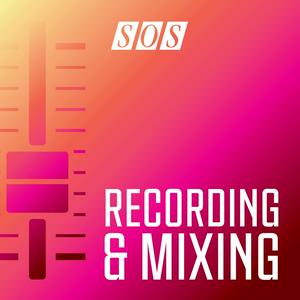Using Tube And Tape Plug-Ins
In this episode, sound-designer Eddie Bazil looks at ways of enhancing a variety of individual tracks and full mixes using plug-ins that are designed to achieve the retro warmth and cohesion of tapes and valves.Chapters00:00 - Introduction01:32 - What Is Harmonic Distortion02:32 - Advances In Music Production Quality04:47 - The Introduction Of CD05:59 - Triodes And Pentodes Vacuum Tubes06:47 - Analysing Harmonic Content07:56 - Example 1: TR-808 Sub Bass10:35 - Example 2: Affecting A Whole Mix*12:39 - Example 3: Adding Saturation15:07 - The Benefits Of Tape17:26 - Example 4: Applying Tape Effects To A Bassline*20:59 - Example 5: Adding Tape To Beats23:47 - Example 6: Enhancing A Piano Track26:56 - Summary* Demonstration track ‘Puppet’ (Examples 2 and 4), written, performed and recorded by John Walden. Vocals sung by Yvonne McKeown.#voxengospan #SummitAudio #T-RackS #Kraftur #Aphex #SSLEddie Bazil BiogEddie Bazil launched his music industry career at the age of 17 as a synth programmer for a range of Electro / New Wave bands including Art of Noise, Spandau Ballet, Pet Shop Boys, Bobin, Paul Dee, DJ Krush, DJ Shadow, Jets Orchestra. By his 20s he was working as a sound designer for Akai, Roland Emu/Ensoniq, eventually signing on exclusively with the latter. Later, due to a growing demand for software instruments and libraries, Eddie started to develop libraries for various software manufacturers, including Native Instruments, Kiesel, Sound Effects Library, Arturia and Propellerheads. A meeting with Phil Allen, a Capital Radio DJ, resulted in the company Samplecraze, which Eddie has spent 20 years developing as an educational resource. At this time he trained in music production and soon gained a number of prominent contracts working with some notable artistes such as Busta Rhymes, Greensleeves, 9 Bar, SFP, Sleeveless, Chris Campbell and Gam Productions. He contracted to Island Records and Chrysalis as a producer and remixer, plus was commissioned to write the score for Macbeth that ran at 2 Way Mirror at Alexander Palace for the Cambridge Shakespeare Company. His ongoing development of Samplecraze has led to him offering educational workshops and classes, releasing four books via PC Publishing and becoming a contributor and forum moderator for Sound On Sound. Recently he has established The Audio Production Hub for online education and been invited by the Recording Academy to become a Grammy judge.https://eddiebazil.co.uk/https://samplecraze.com/Catch more shows on our other podcast channels: https://www.soundonsound.com/sos-podcasts
